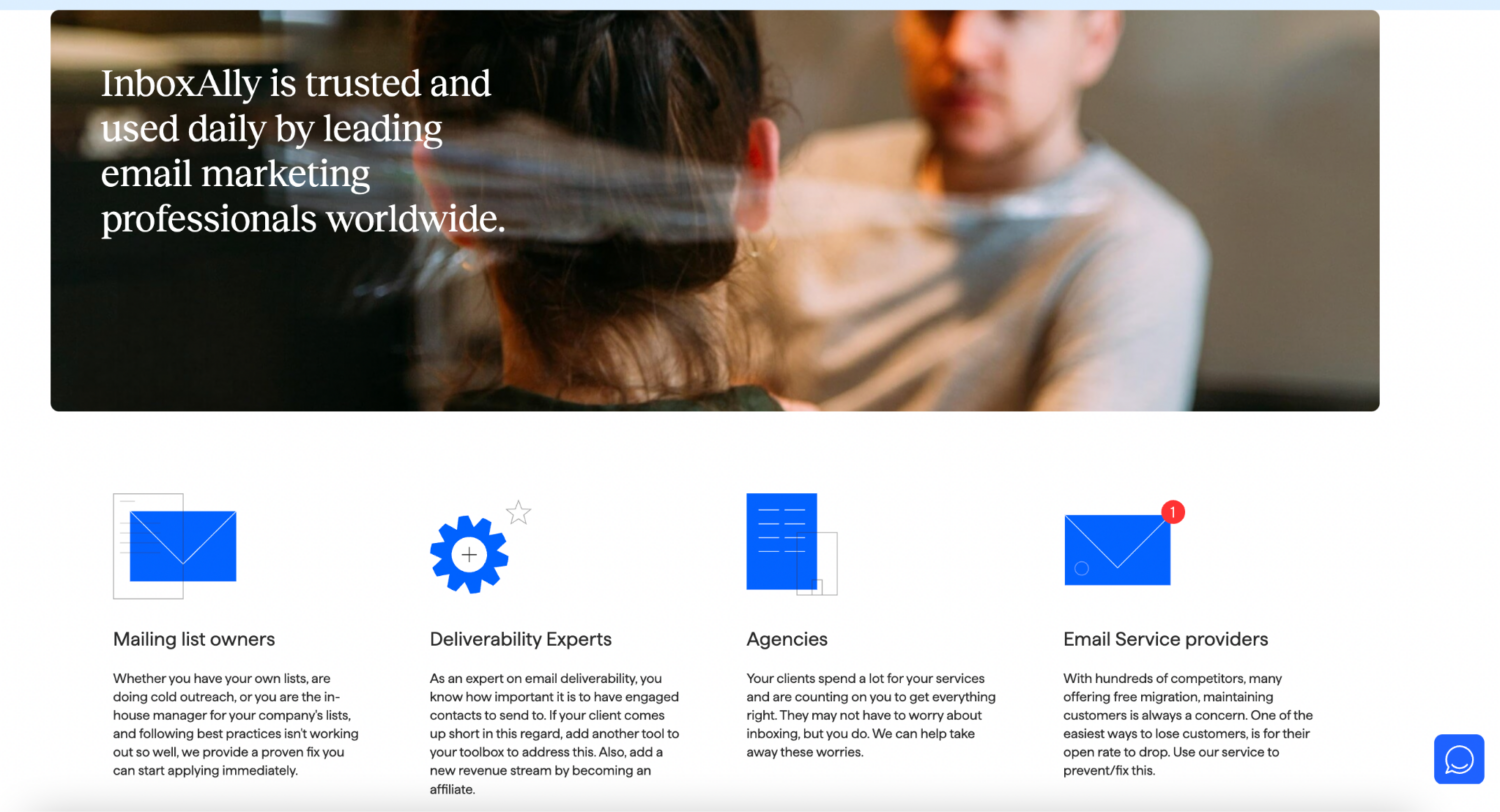Unlocking the perfect formula for how many cold emails to send per day is a critical puzzle for anyone looking to make meaningful connections and drive results in the digital age.
In this article, we’ll cover the ins and outs of cold emailing and its significance and even tackle the question of the ideal email count per day. We will also dive into the art and science behind striking the perfect balance between persistence and annoyance.
Ready to conquer your inbox? Let’s supercharge your email strategy!
What is Cold Emailing?
Cold emailing refers to sending unsolicited emails to individuals or businesses with whom you have no prior relationship or connection.
Its primary goal is to initiate contact, establish a connection, and ultimately achieve a specific objective. This objective could be generating leads, selling, or building a professional relationship.
Additionally, cold emailing can be a powerful tool for businesses and individuals looking to expand their network, generate leads, or drive sales.
However, it requires careful planning, adherence to best practices, and a focus on building genuine connections with recipients to be successful.
Related: Does Cold Emailing Work?
Importance of Cold Email Campaigns In Today’s World
1. Broadening Reach: Sending cold emails allows businesses and individuals to connect with a vast and diverse audience, including potential customers, partners, investors, and industry influencers. It also expands reach beyond existing networks.
2. Cost-Effective Marketing: Cold email marketing is cost-effective compared to traditional advertising and direct marketing methods. It only requires minimal investment in tools and resources, making it accessible to startups and small businesses.
3. Personalization: Cold emails can be tailored to individual recipients, incorporating their names, specific interests, and pain points. This personalized approach also enhances the chances of engagement and conversion.
4. Targeted Marketing: Cold email campaigns can be highly targeted with the correct data and research. Businesses can reach out to prospects more likely to be interested in their products or services, resulting in higher-quality leads.
5. Data-Driven Decisions: Cold outreach generates data that can be analyzed to refine marketing strategies. Metrics such as open rates, click-through rates, and conversion rates provide insights into what works and needs improvement.
6. Building Relationships: Cold email marketing is not only about immediate sales; it’s also about building working relationships. Consistent and valuable communication can nurture leads over time, turning them into loyal customers or partners.
7. Global Reach: Cold emails transcend geographical boundaries in a digital age. You can connect with prospects and collaborators worldwide, opening up international business opportunities.
8. Scaling Business: For startups and growing businesses, cold outreach offers a scalable way to generate leads and expand their customer base. As the business grows, the outreach efforts can be scaled accordingly.
9. Competitive Advantage: When done effectively, cold email outreach can give businesses a competitive edge. It also allows them to proactively engage with potential customers before competitors do it.
10. Diversification of Marketing Channels: Diversifying marketing channels is essential in today’s dynamic digital landscape. Cold email marketing complements other marketing strategies, such as content marketing and social media, creating a holistic approach to customer acquisition.
11. Entrepreneurship and Networking: For entrepreneurs and professionals, cold outreach is a valuable tool for networking, seeking mentorship, and exploring collaboration opportunities. It also enables them to connect with industry leaders and experts.
12. Measuring ROI: Cold email campaigns are measurable, enabling businesses to calculate the return on investment (ROI) accurately. This data-driven approach also allows for the efficient allocation of marketing resources.
13. Adaptability: Cold outreach can adapt to changing market conditions and customer preferences. It offers the flexibility to adjust messaging and strategies in response to evolving needs.
How Many Cold Emails to Send Per Day to Avoid Triggering Spam Filters

Well-known email service providers (ESPs) such as Gmail and Microsoft offer varying email-sending limits depending on your organization’s plan.
For instance, Gmail users have a daily limit of 500 emails, which can be sent to up to 500 recipients. Even better, if you’ve built a positive sender reputation – think of decent open rates and minimal “spam” reports – mail servers are more likely to trust you and ensure your message lands safely in your recipient’s inbox. [1]
However, if your company has embraced Google Workspace, the daily sending limit skyrockets to 2000 emails per day. However, there’s a slight distinction, as multi-send emails are capped at 1,500, and trial accounts can send up to 500.
On the other hand, Microsoft Office 365 boasts a more substantial maximum email limit of 10,000 recipients per day, a cap that applies to all its plans. Office 365 employs stringent authentication measures such as DomainKeys Identified Mail (DKIM) and Sender Policy Framework (SPF) to safeguard your emails’ delivery to the intended inboxes. [2]
These measures also serve as email authenticity verifiers, enhancing your email’s credibility and increasing the likelihood that it reaches the desired recipient without getting caught in spam filters.
Related: Cold Email vs. Spam – The Key Differences
Why Choose InboxAlly?
Utilizing a tool like Inboxally can significantly boost your cold email efficiency, allowing you to send a much higher volume of emails daily.
With its streamlined features and automated processes, Inboxally enables you to personalize and send cold emails more efficiently while managing responses and follow-ups.
As a result, you can reach out to more prospects in less time, ultimately enhancing your outreach and increasing your chances of generating positive leads and responses.
Factors That Influence Your Daily Cold Email Limits
Industry and Niche
Different industries and niches have varying norms and expectations regarding email communication. For instance, some industries might be more receptive to cold emails, while others may have a lower tolerance.
Therefore, understanding your industry’s dynamics is crucial. For example, B2B (business-to-business) industries often have different email practices than B2C (business-to-consumer) companies.
Resources and Team Size
Your cold email strategy should align with the resources at your disposal. If you have a small team or limited resources, sending a high volume of cold emails might not be feasible.
So, consider the size of your email list, the time and effort required for personalization, and the capacity of your team to manage responses.
Stage of Your Business or Campaign
The stage of your business or campaign also plays a significant role in determining your email limits. Your outreach might be more aggressive if you’re a startup trying to gain initial traction.
On the other hand, established businesses with a large customer base might have different goals and limits for their cold email campaigns.
Response and Conversion Rates
Monitoring your response and conversion rates is essential. If you’re sending many cold emails daily but getting minimal answers and conversions, it might be a sign that you must adjust your strategy. High-quality leads and personalized messaging can improve these rates, allowing you to send fewer emails with better results.
Balancing these factors is crucial to determine the optimal number of cold emails to send daily. Your approach should also be data-driven, with regular monitoring and adjustments to ensure you stay within email service provider limits and achieve your desired outcomes effectively and efficiently.
How to Determine the Optimal Quantity of Cold Emails to Send
Determining the number of cold emails to send is critical to your outreach strategy. Here’s a step-by-step guide to help you figure out the correct quantity:
1. Understand Your Goals
Begin by clarifying your objectives. What do you want to achieve with your next cold email campaign? Is it generating leads, increasing sales, or building partnerships? Your goals will inform the volume of emails you need to send.
2. Analyze Your Email List
Next, evaluate the quality of your email list. Are these contacts genuinely potential leads or prospects, or is there a chance of a mismatch? A smaller, more targeted list might require fewer emails.
3. Consider Your Resources
Assess your team’s capacity and available resources. Sending and managing a high volume of emails requires time and effort. So, ensure you have the personnel and tools to handle your chosen volume effectively.
4. Research Industry Benchmarks
Investigate industry-specific email benchmarks to get an idea of what’s considered typical. Industries and niches also vary in email response rates and acceptable email volumes.
5. Start with Small Tests
If you need more clarification about the right volume, it’s wise to begin with a small test campaign. To do this, send a limited number of emails to gauge the response and conversion rates.
6. Calculate Response Rate Goals
Determine your desired response rate. How many positive responses or engagements are you aiming for? Doing so helps you calculate the volume needed to reach your goals.
7. Consider Frequency
Think about the frequency of your outreach. Are you sending emails daily, weekly, or monthly? Adjust the volume accordingly to stay within acceptable limits.
8. Set a Budget
Budget constraints can also influence the number of emails you send—factor in the costs associated with email marketing tools and list management.
9. Monitor and Adjust
Continuously monitor the performance of your cold email campaigns. For instance, keep track of open, click-through, and conversion rates. Adjust the volume and strategy accordingly if your campaign needs to meet your goals.
10. Comply with Regulations
Ensure your email campaign complies with email marketing regulations, such as CAN-SPAM in the United States and GDPR in Europe. Violating these regulations can have legal consequences.
11. Personalize and Segment
Rather than sending a high volume of generic emails, focus on personalization and segmentation. Tailor your messages to specific recipients based on their interests, needs, and behaviors. Quality often trumps quantity in cold email campaigns.
12. A/B Testing
Conduct A/B tests to refine your approach. Test different subject lines, email content, and sending times to optimize your email strategy.
How Frequently Should I Reach Out to a Potential Lead?
The answer to this question hinges on two critical factors: 1) the size of your target audience and 2) the value of each contact.
If your goal is to market to a small, select group, there may be more effective approaches than cold emailing. Instead, you’d benefit more from alternative content marketing strategies.
However, if your reach extends to thousands of prospects monthly, consider sending at least one cold email per week. Keep in mind that this frequency can vary based on your industry niche.
Building a substantial email list also takes time, so you wouldn’t want to exhaust your efforts prematurely.
Moreover, dividing your daily tasks into smaller, manageable segments throughout the week is wise to manage your email outreach effectively. For instance, if you have a 30-minute lunch break, you might allocate 10 minutes to brainstorming cold email ideas and 15 minutes to planning your next strategy.
This way, you can write three cold emails in the morning, two during lunchtime, and four more in the evening.
Additionally, it’s essential to have realistic expectations about the results of cold emails. These interactions often require time to build rapport with your readers, leading to higher conversion rates. Therefore, our advice is simple: remain patient and meticulously track your efforts.
Ultimately, you’ll find that the extra effort invested in cold emails will yield long-term benefits.
So, How Many Follow-up Cold Emails Should I Send?
Now that we’ve established the frequency of sending cold emails, deciding whether to manage this task independently or seek assistance is crucial.
Given the automation capabilities available for cold emails, you could set up your campaigns and forget about them. However, human intervention will become necessary if you aim to enhance your performance.
Imagine you’ve crafted 100 cold emails and are confident in your work. What’s the next step? Should you stop there or send another 50 the following day? Perhaps not. Sending more emails is convenient. However, dedicating half your time to reviewing and refining your cold email campaigns will yield substantial improvements.
Here’s why:
- Correcting Mistakes: Cold emails often fail due to formatting errors, spelling mistakes, grammar problems, lack of enthusiasm, or an unprofessional tone. Even if your content could be better, such flaws can deter potential clients.Therefore, identifying and promptly addressing these issues is vital to avoid losing valuable leads.
- Engaging with Prospects: Occasionally, prospects may respond to your cold emails multiple times or leave comments on your original posts. These interactions also offer valuable insights into your presentation style and what resonates with your audience.
- Relevance and Customization: While immediate conversions from cold emails are rare, provide relevant information whenever possible. People also appreciate unique insights and reasons to choose you over competitors.So, avoid inundating your audience with redundant details. Instead, focus on what truly matters and adapt your communication to match your personality.
In short, finding the right balance between the quantity and quality of your cold emails is crucial. Patience, continuous improvement, and personalized engagement are keys to success in this digital outreach strategy.
Also read: Cold Email Follow-Up – How to Get Your Prospect to Respond
Final Words

Balancing outreach and overreach must be considered for a successful cold email campaign. Sending too many cold emails daily is a strategy to cast a wide net. However, it often leads to a one-way ticket to the dreaded spam folder.
Moreover, a well-calibrated approach that emphasizes quality over quantity, steering clear of spam traps, and ensuring your messages land in the inbox paves the way for a successful cold email campaign.
To supercharge your email outreach while maintaining this balance, consider utilizing Inboxally. This powerful tool can help you streamline your cold email efforts, ensuring your messages reach their intended recipients while avoiding the pitfalls of spam folders.
So, start sending more thoughtful emails today with Inboxally, and watch your campaign’s success soar.
Remember, it’s not just about how many cold emails you send; it’s about sending the right ones to the right people, effectively and responsibly. Click here to learn more about Inboxally and unlock the full potential of your email outreach efforts.
References:
